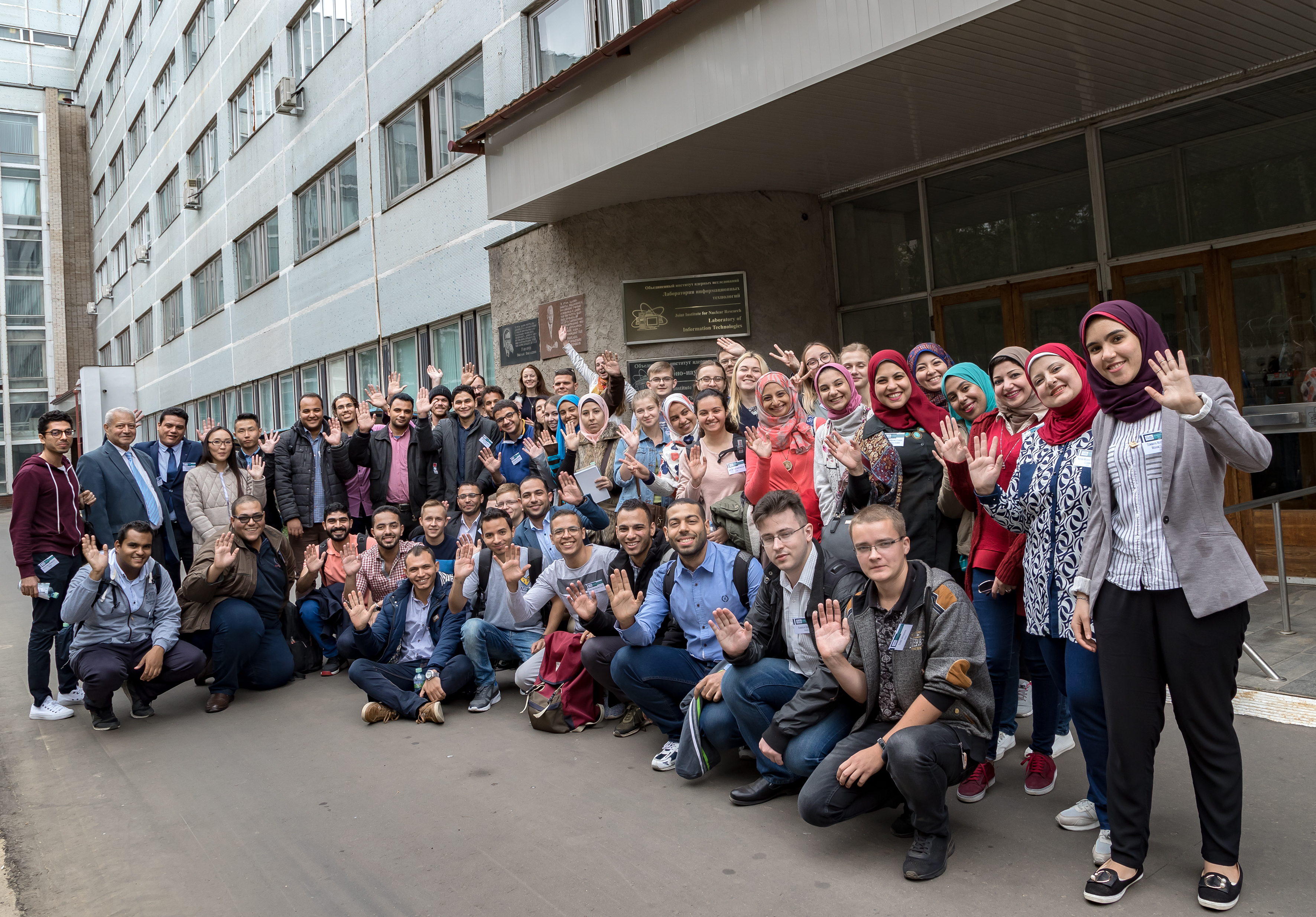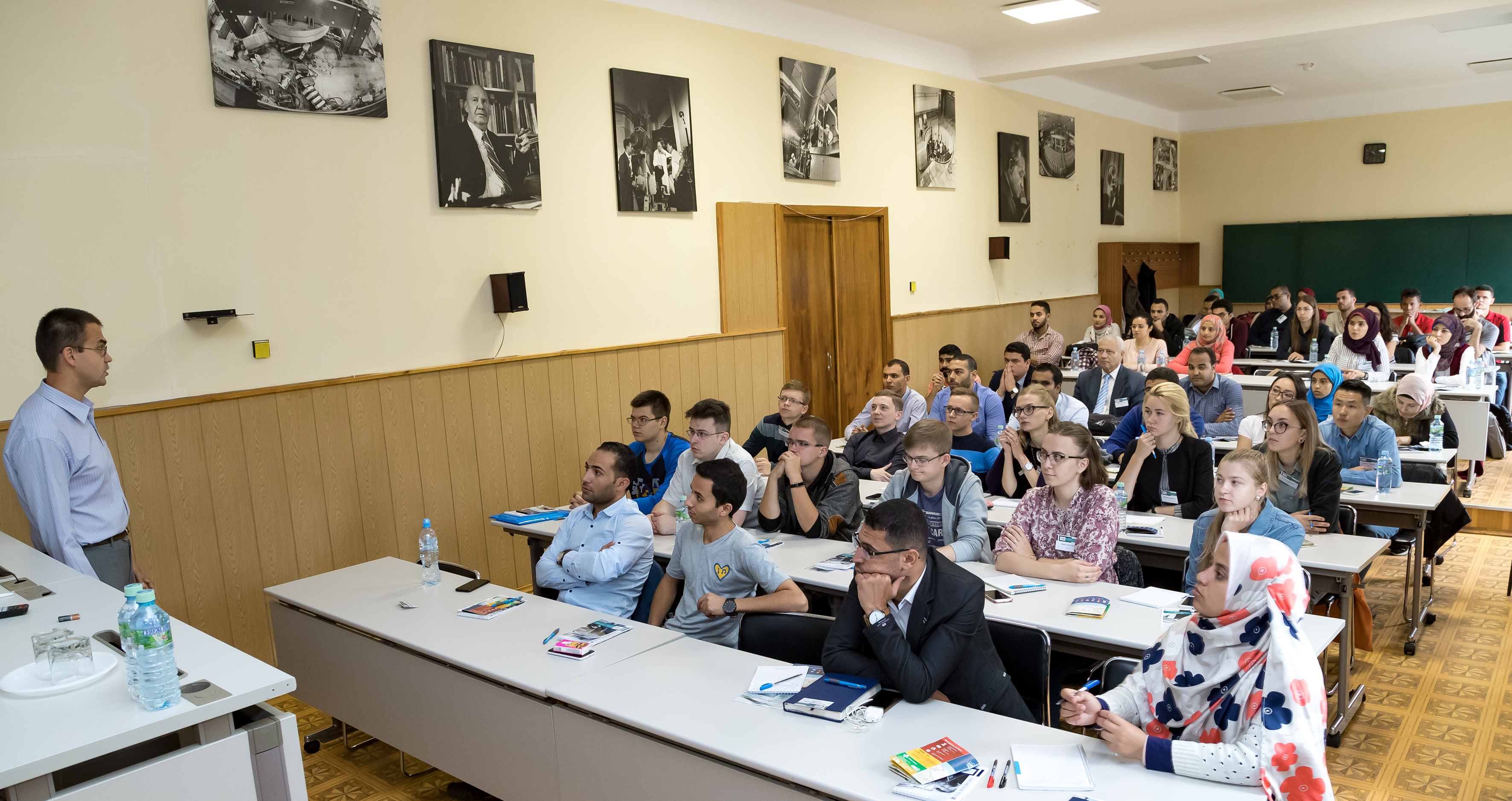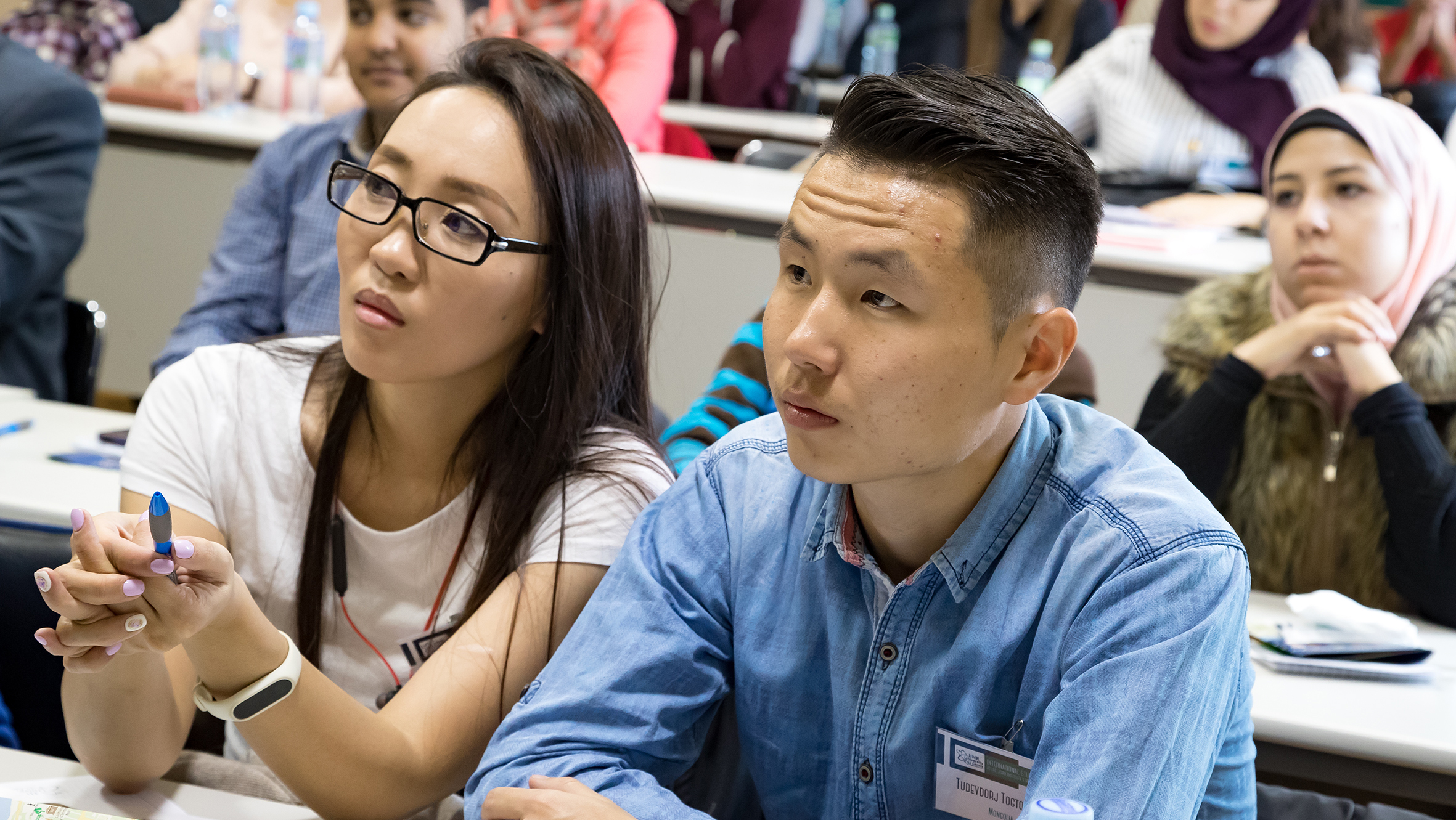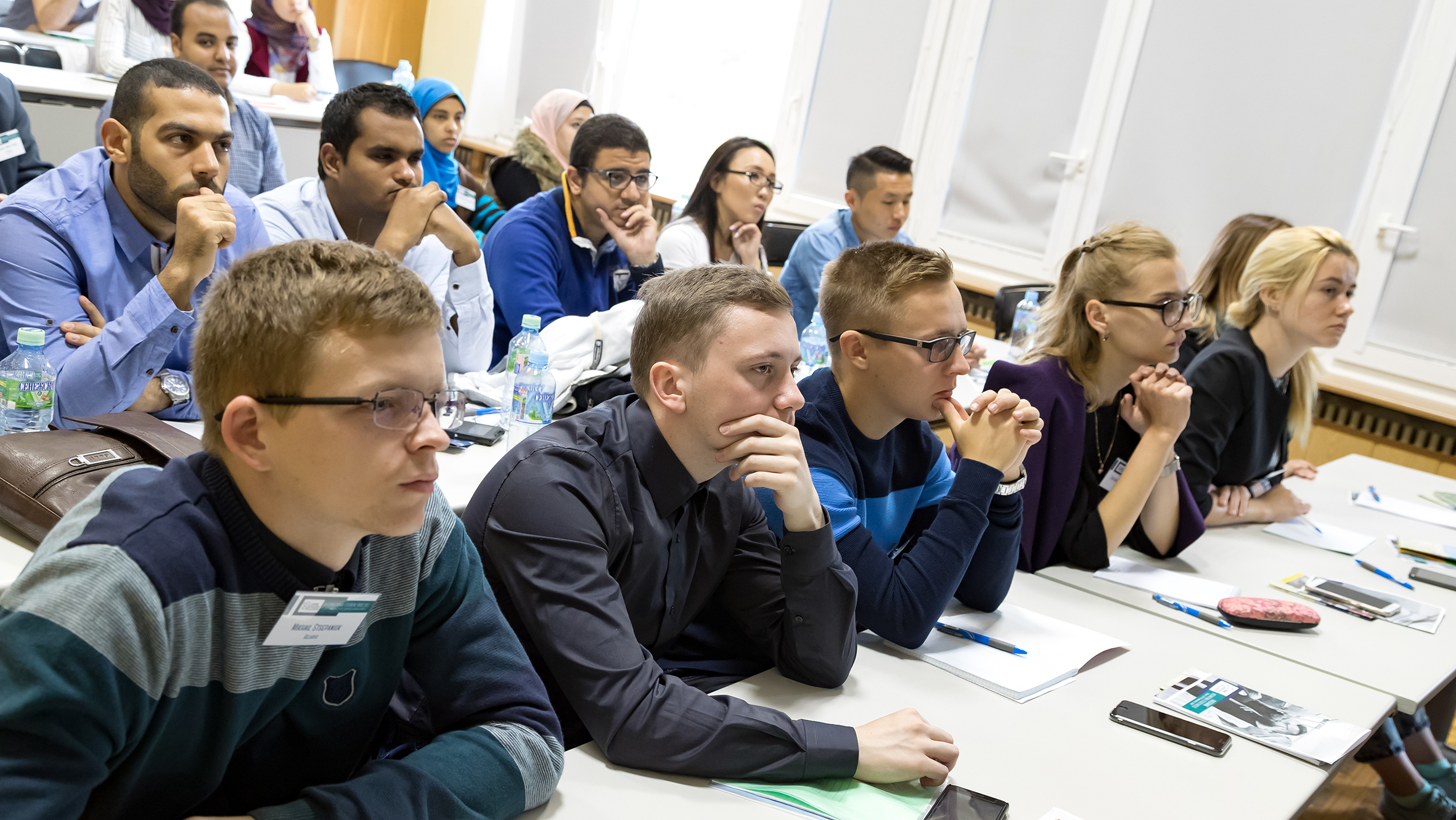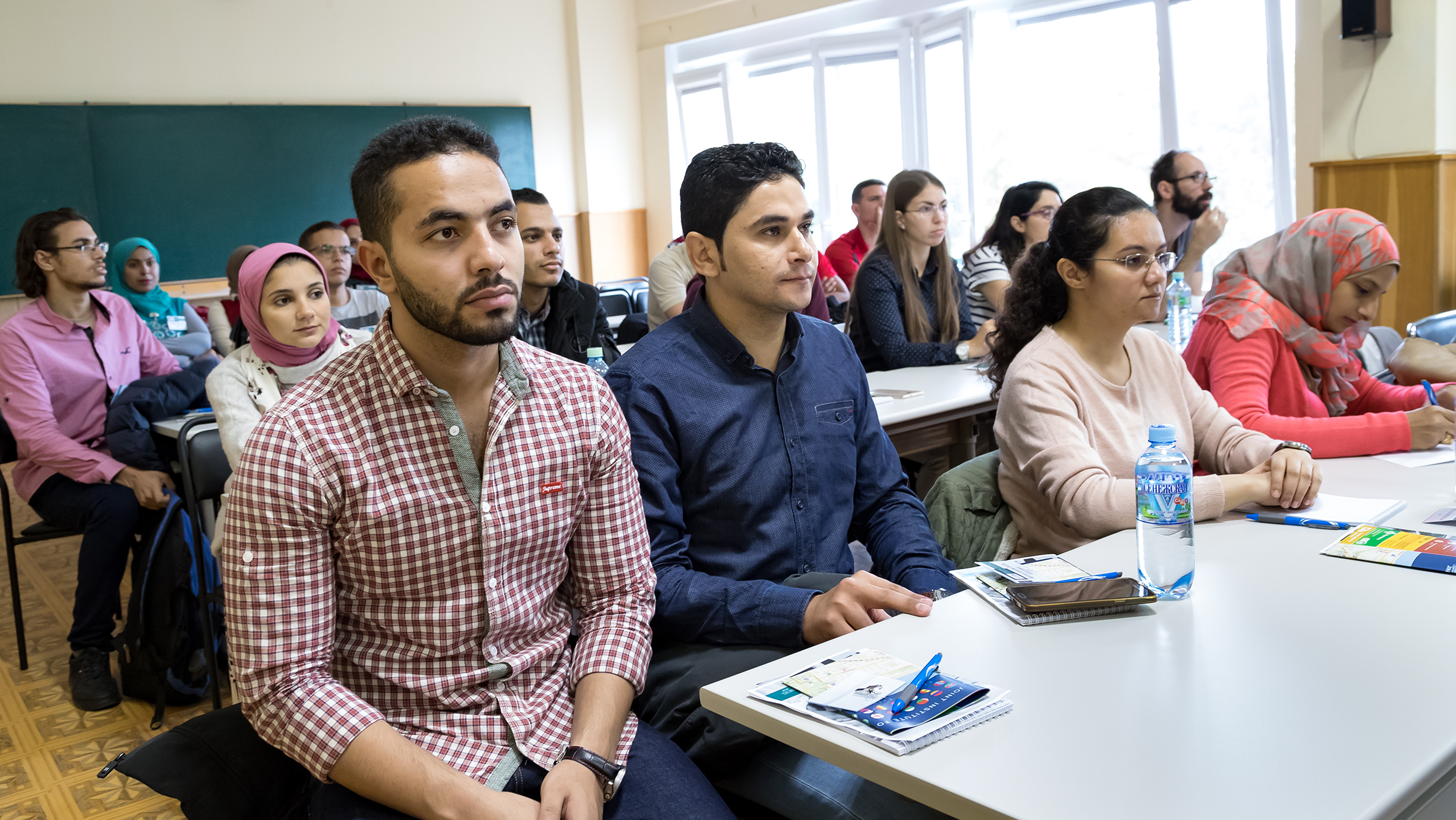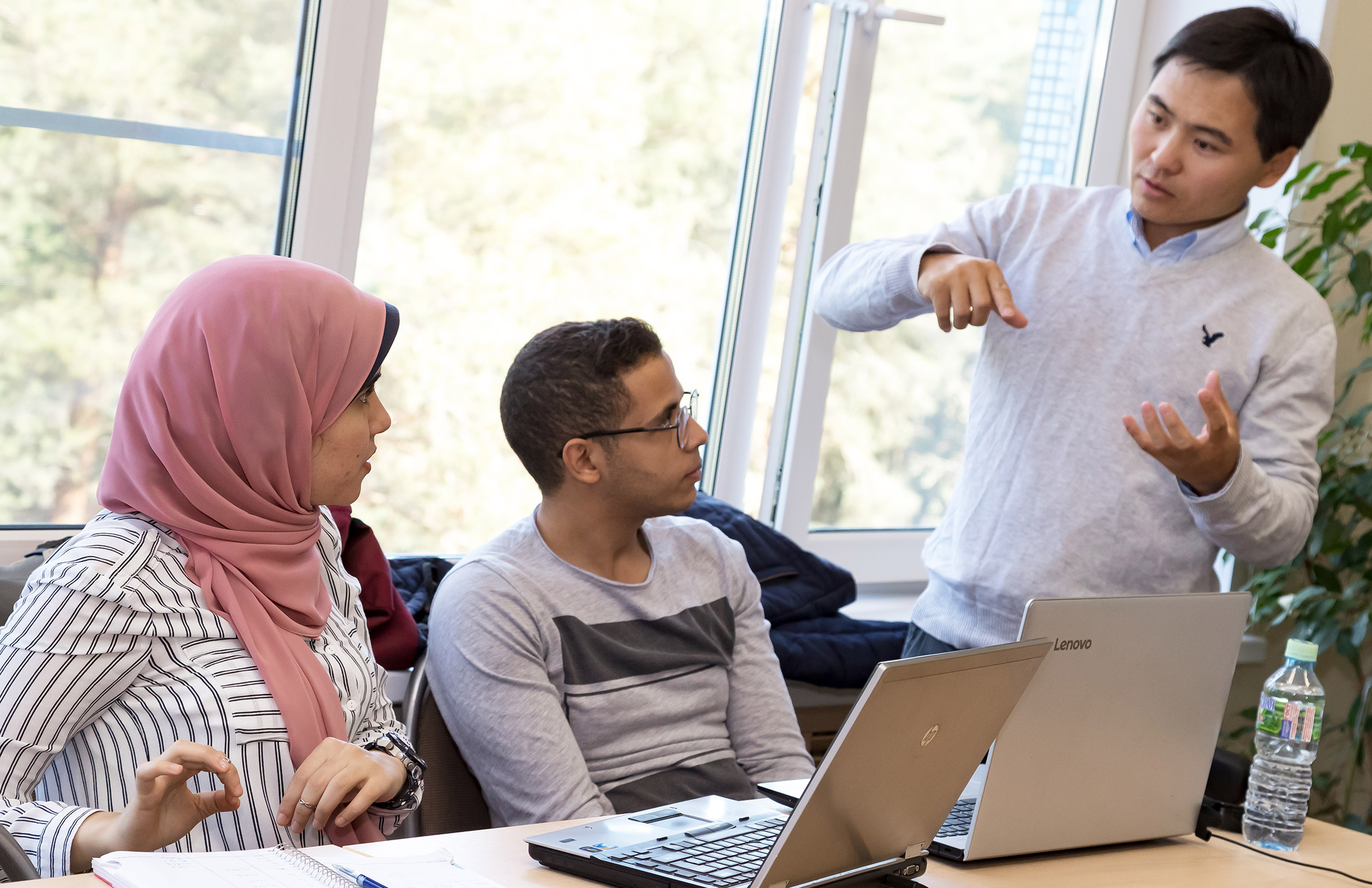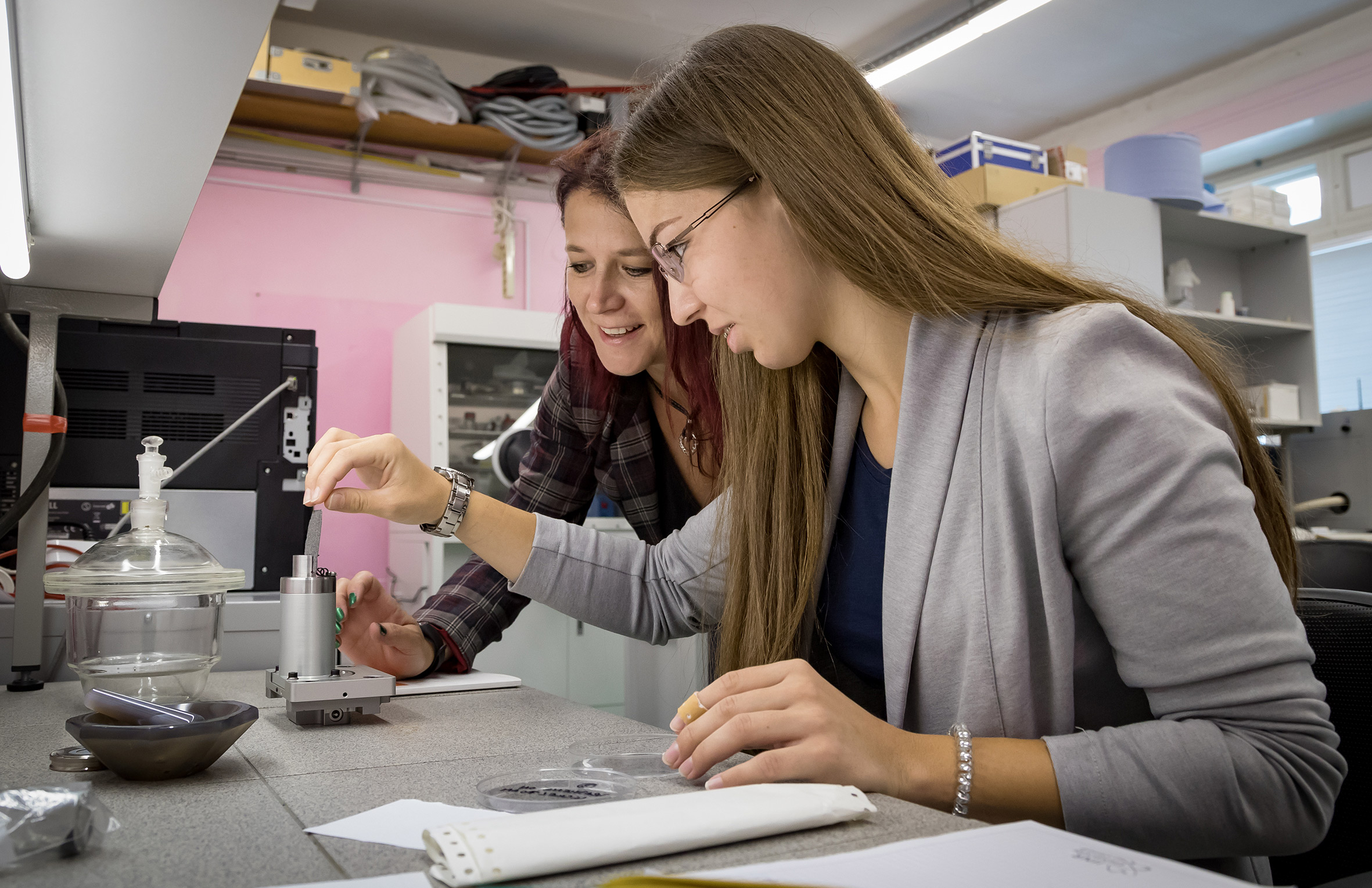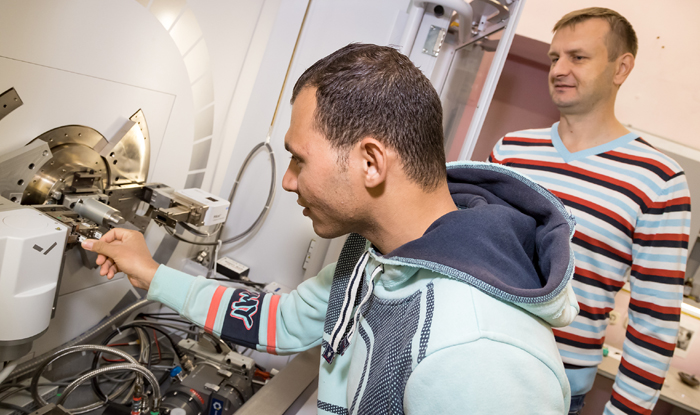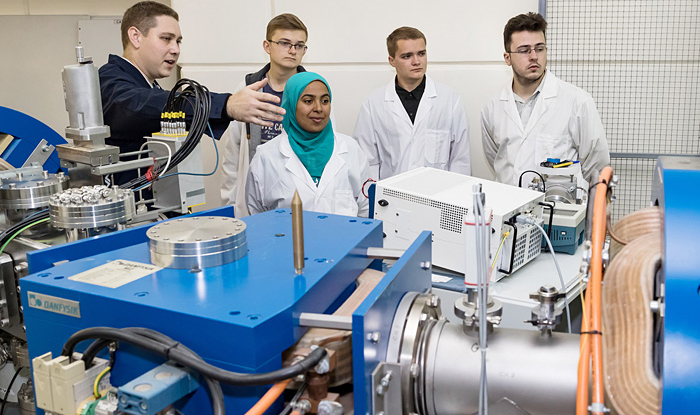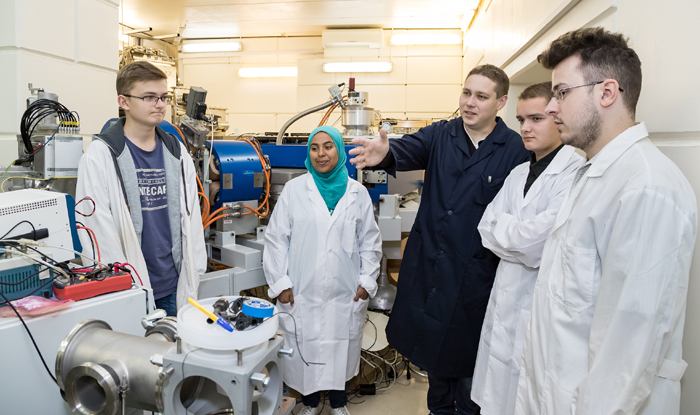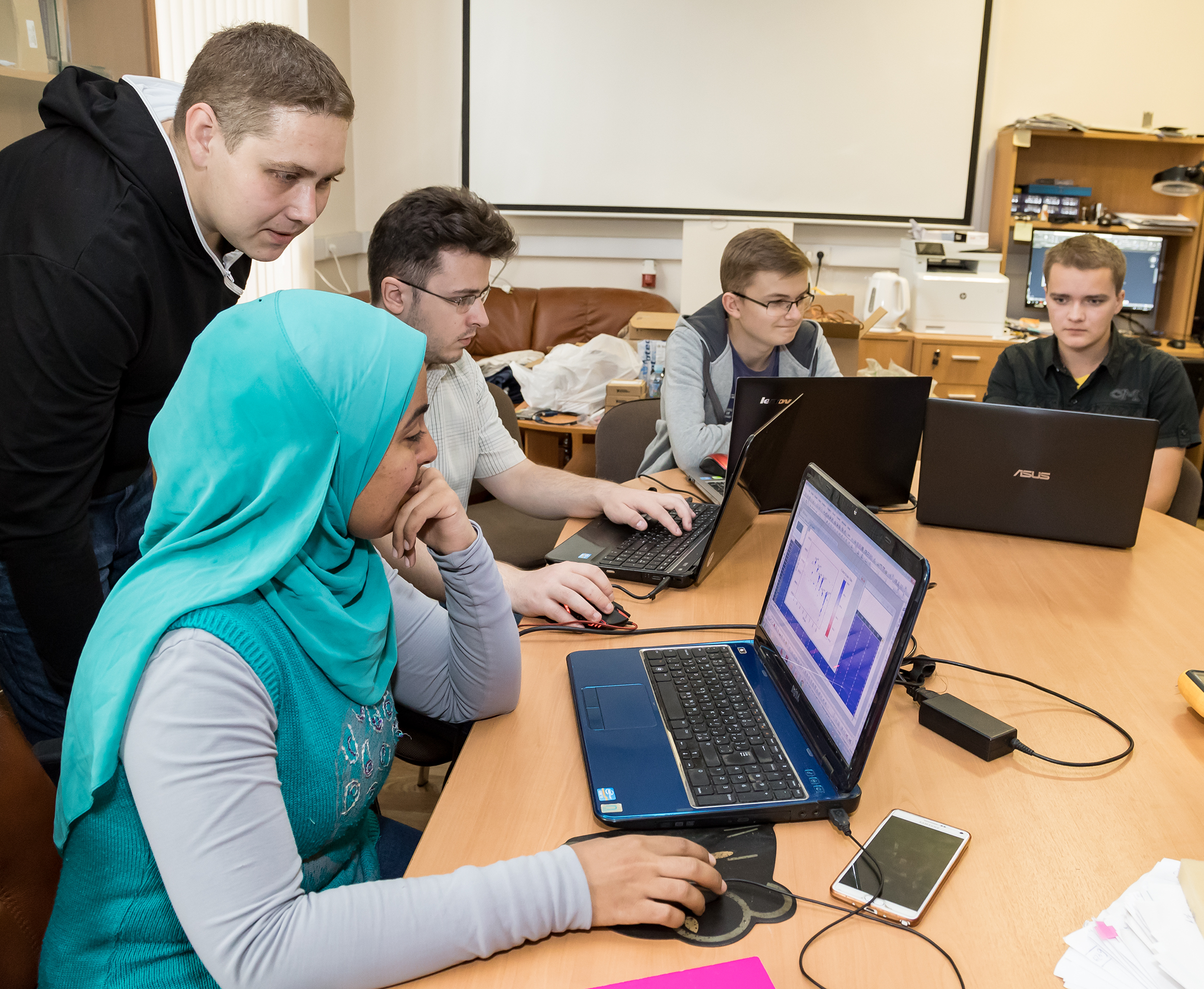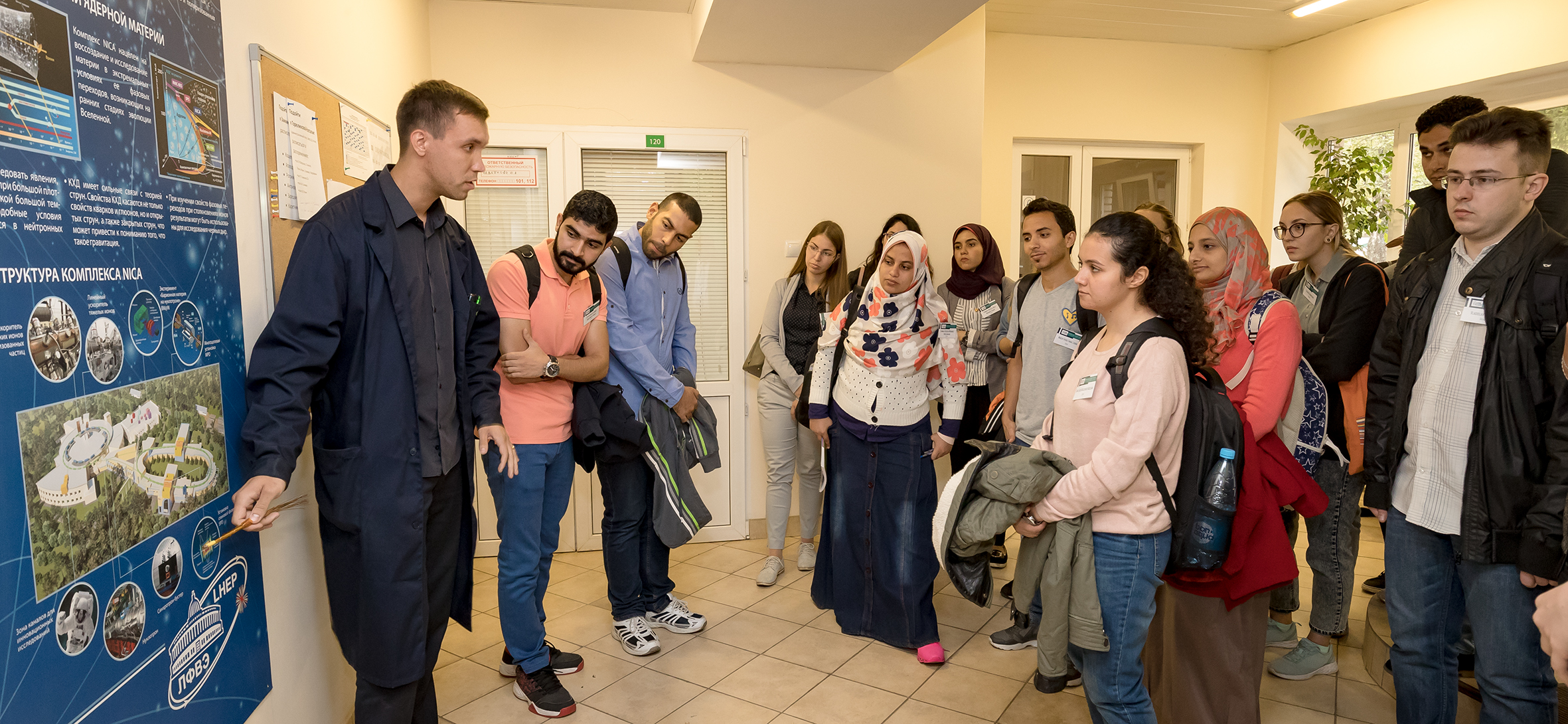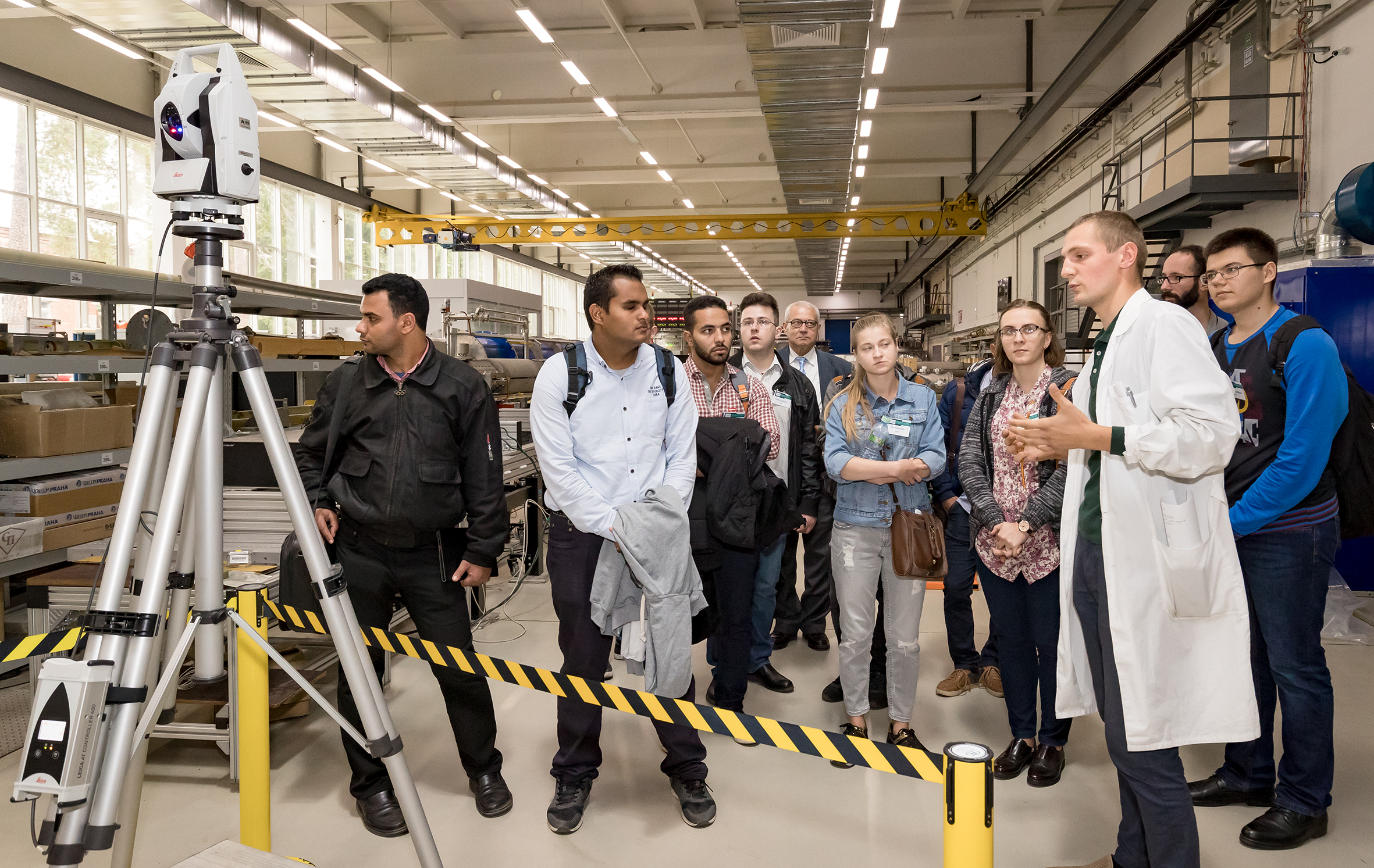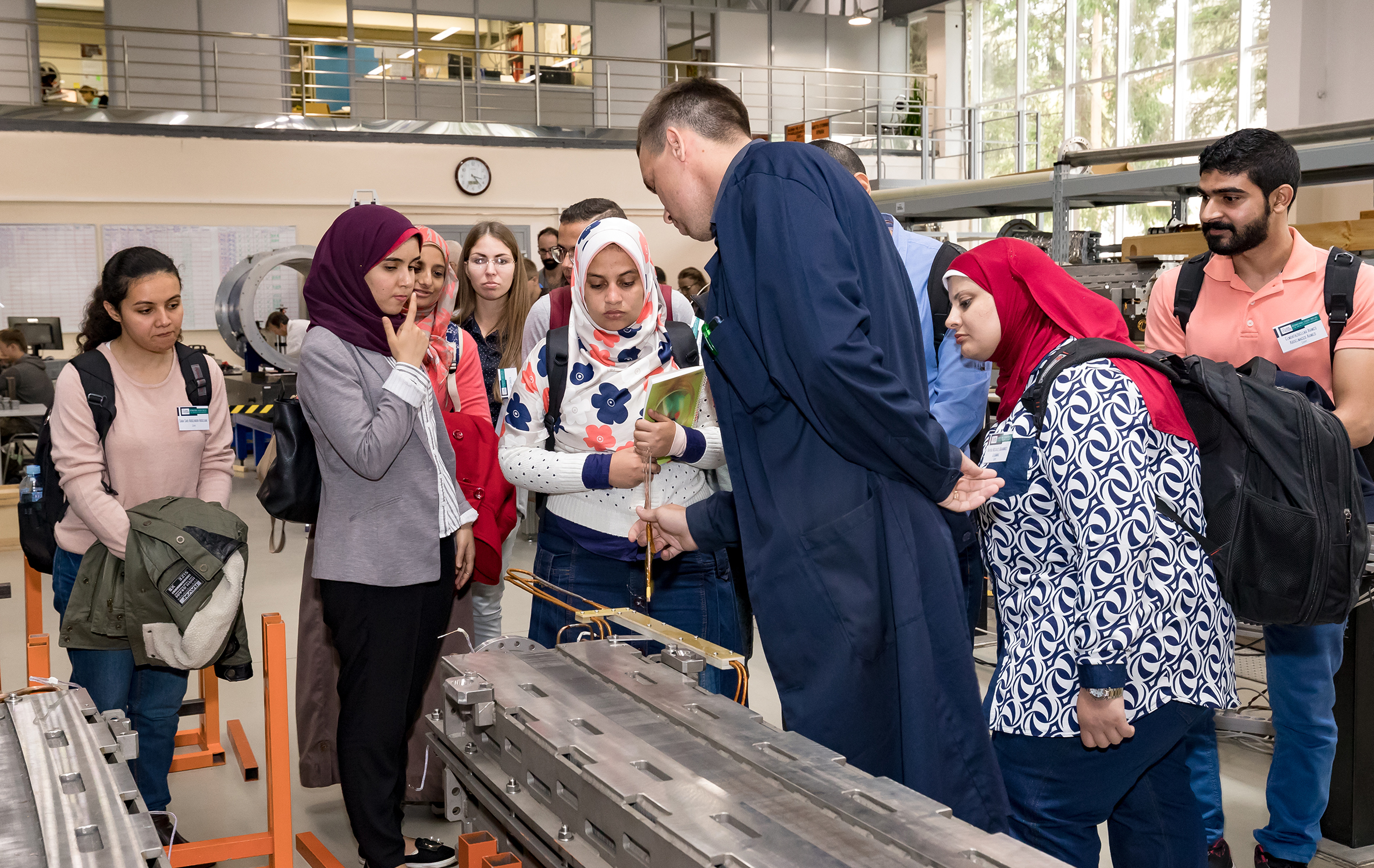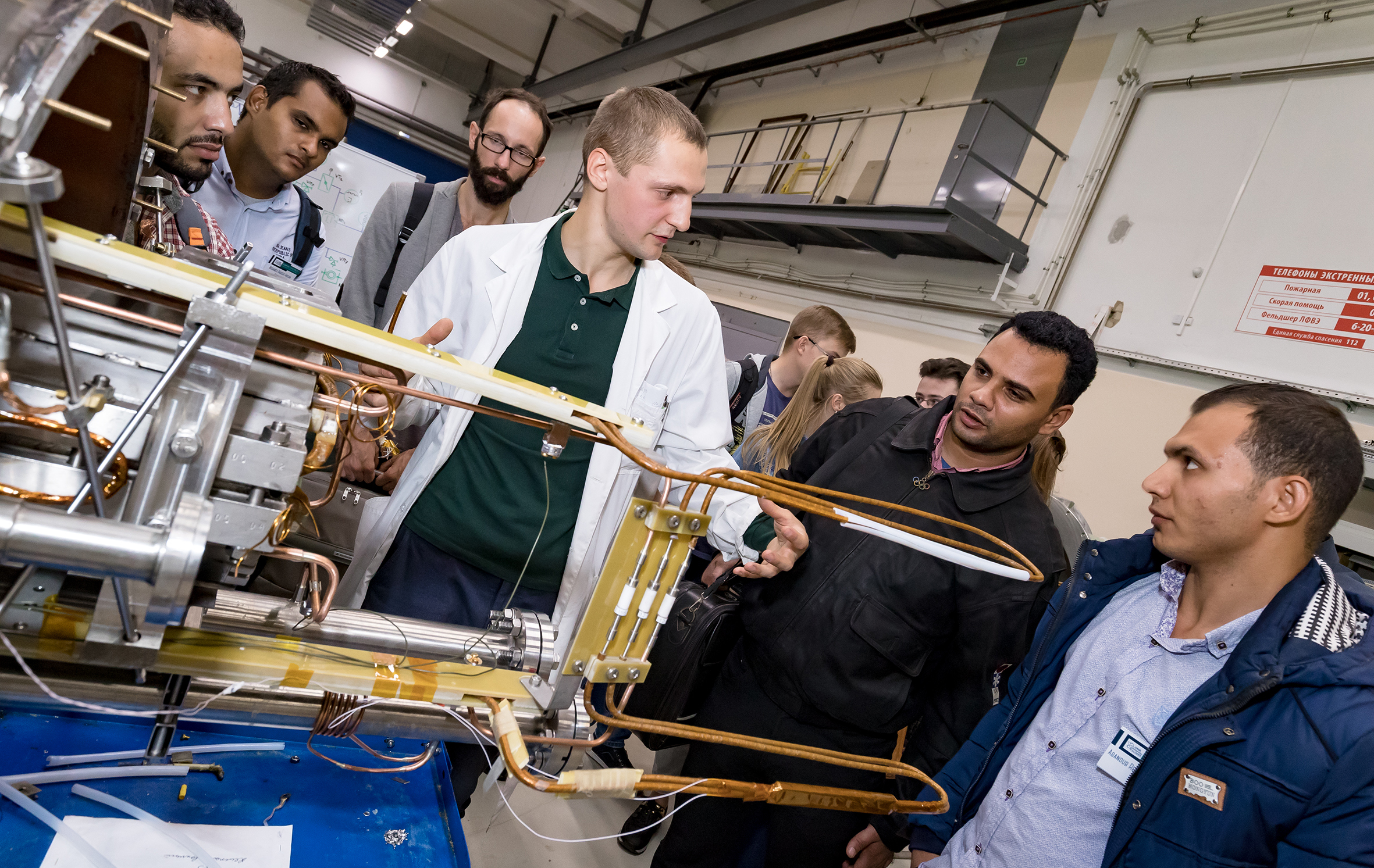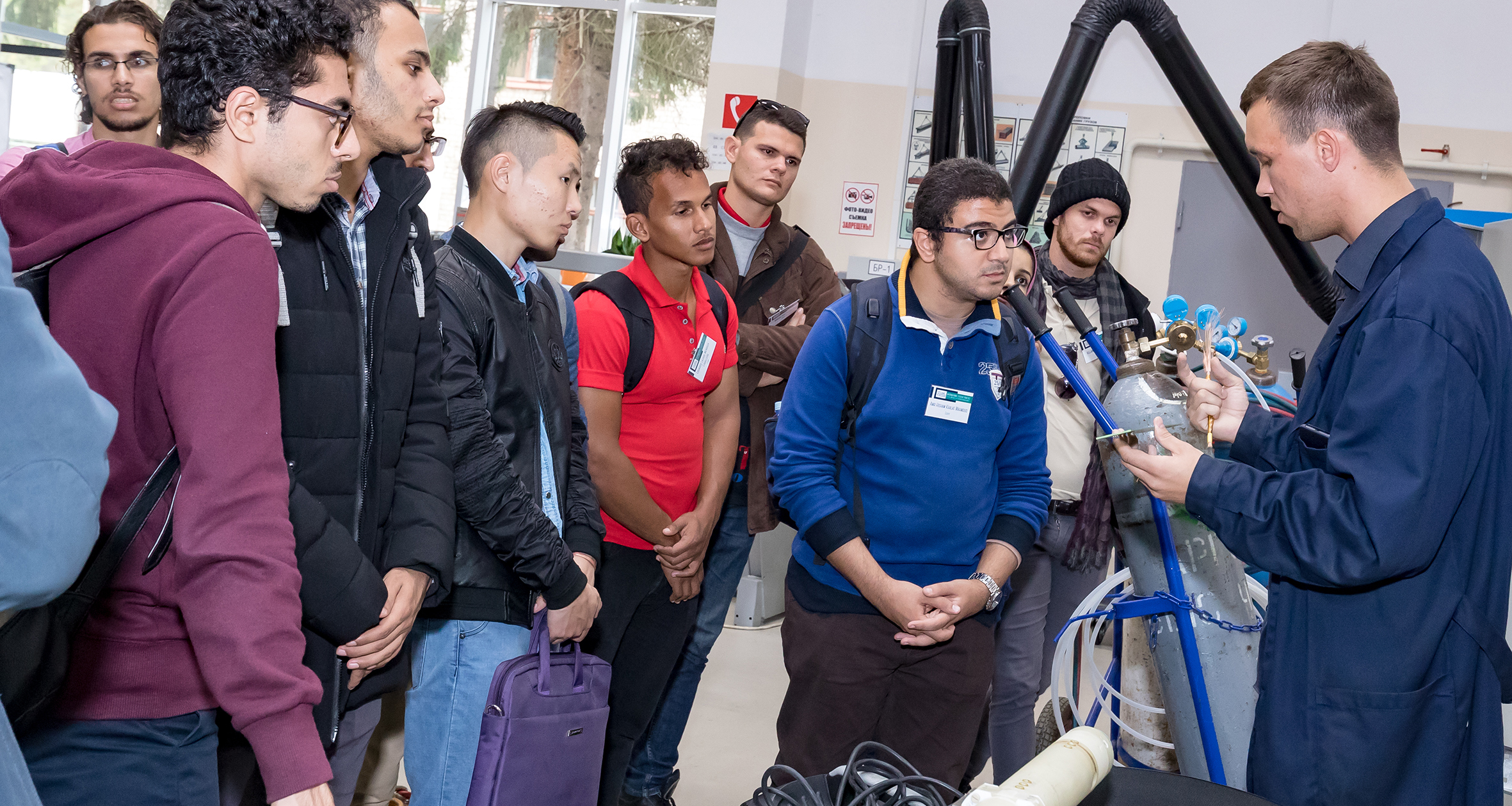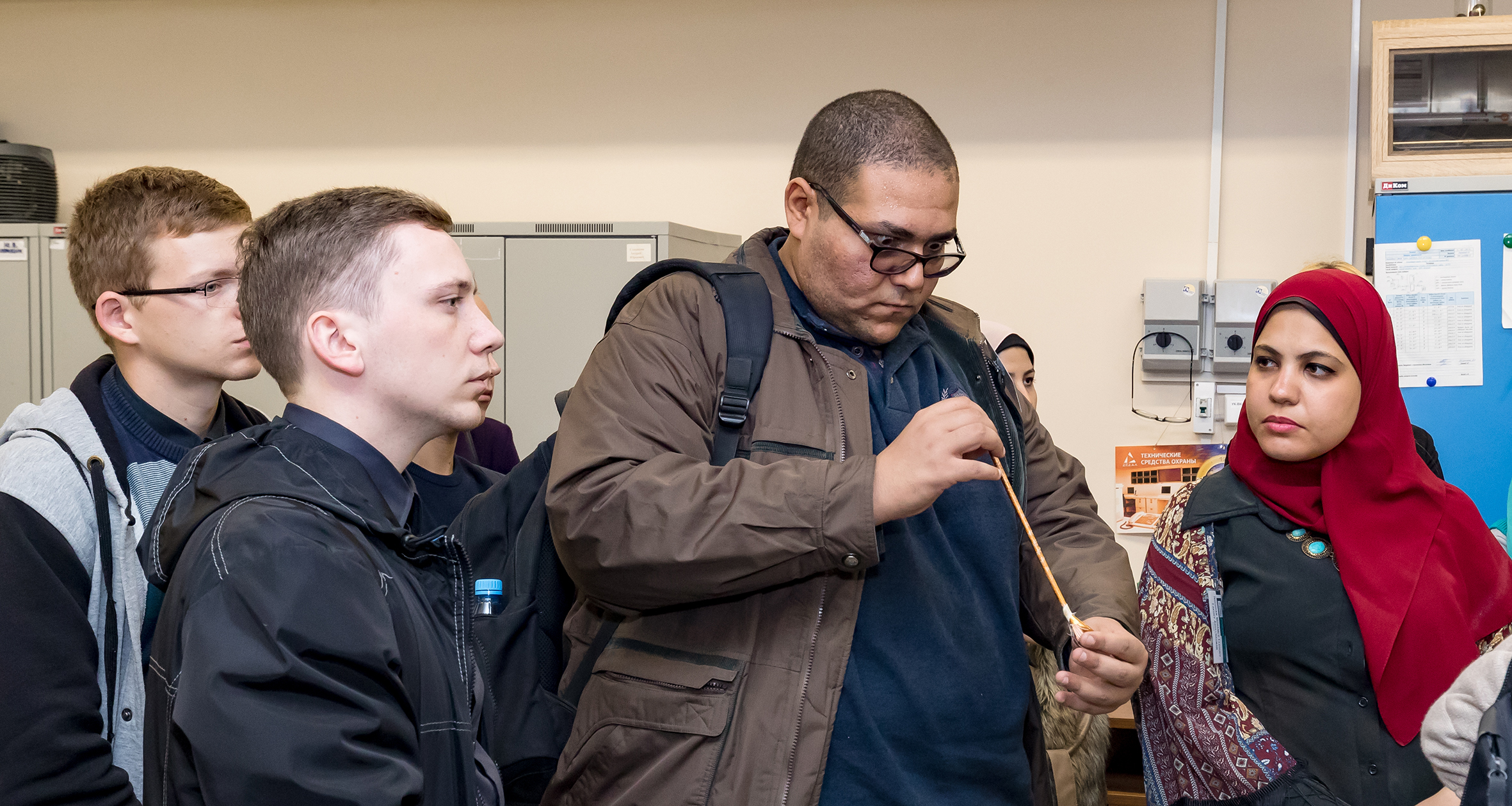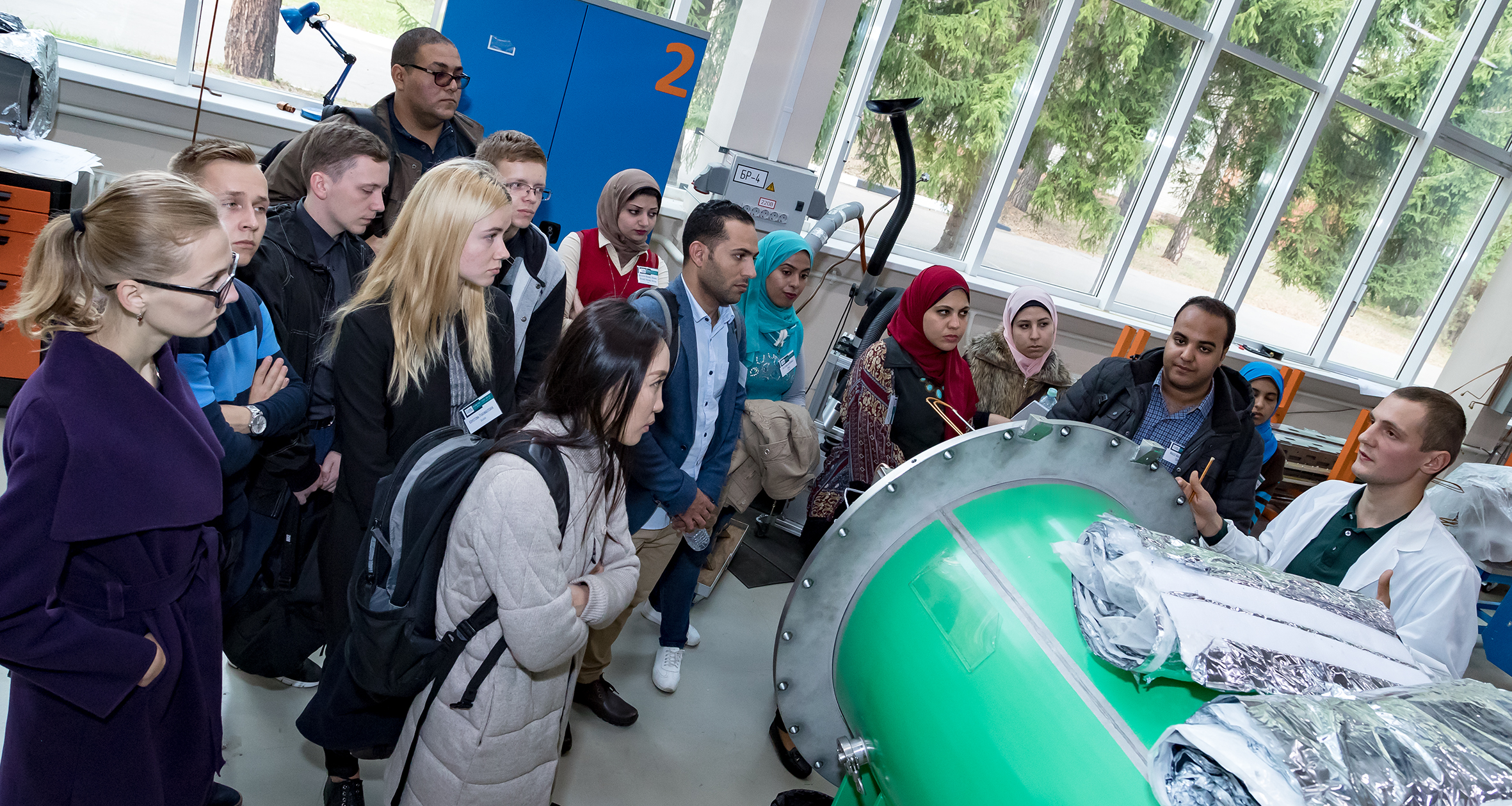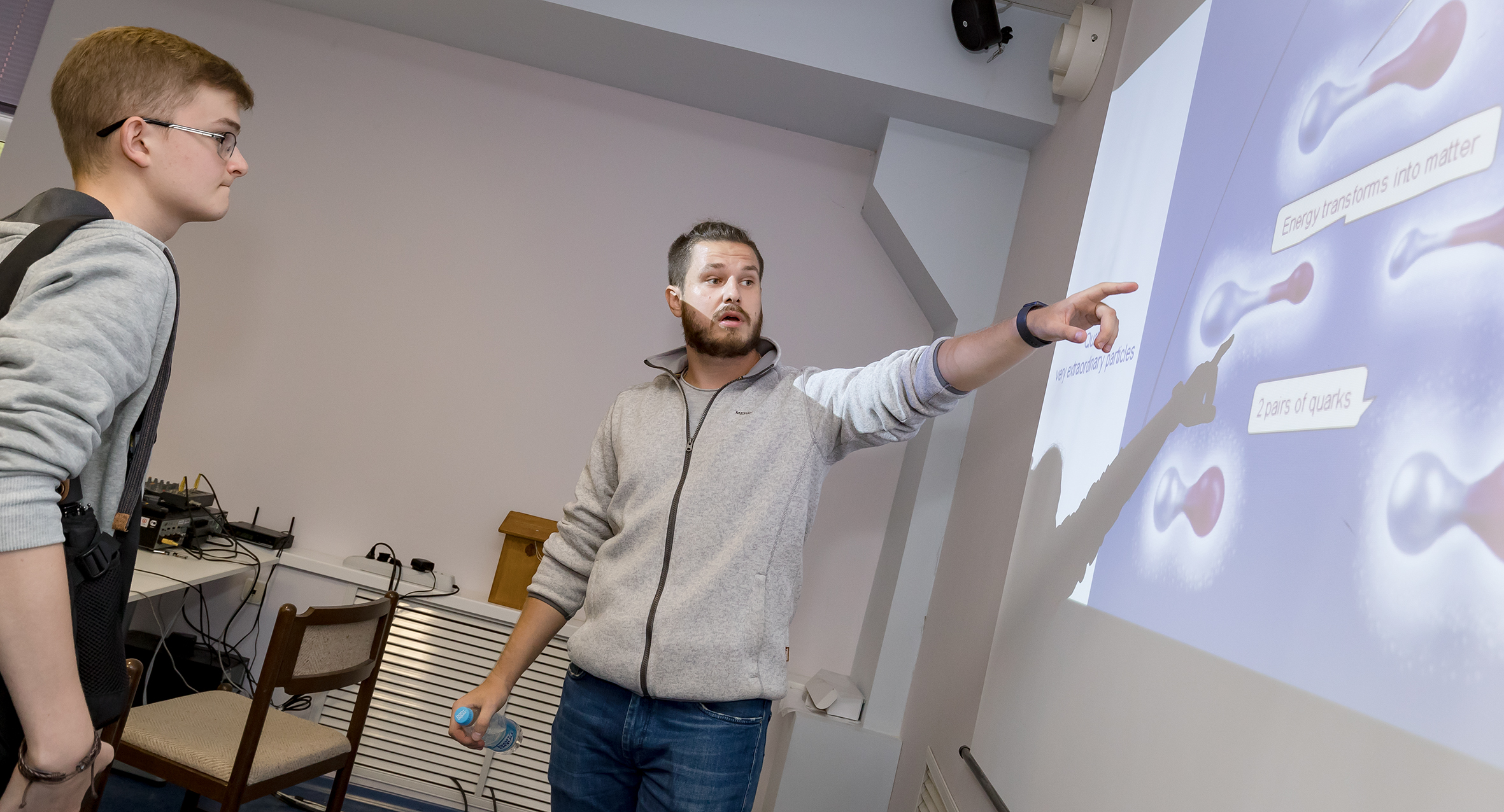Practice in JINR: milestones of the 3rd stage
Education, 04 October 2018
48 students, post-graduate students and young scientists from universities and institutes of Belarus, Cuba, Egypt, Mongolia and Serbia participated in the 3rd stage of the International Student Practice held by the JINR University Centre. They worked at educational and research projects under the supervision of staff members of the laboratories of neutron physics, nuclear reactions, theoretical physics, nuclear problems, radiation biology as well as the UC scientific and engineering group. On the last day of the practice, students and supervisors shared their impressions.
Supervisor of one the FLNP projects Dorota Chudoba: In our project, the Serbian student Šarolta Cako studied graphene. We have a joint project with Romania in the frames of which we have acquired samples of graphene and supported graphene. The Šarolta’s task was to determine samples’ structure. She was well-prepared, studied necessary literature and learned what graphene is, its properties and etc. We used two measurement techniques in the project: with the use of an X-ray diffractometer in our laboratory and raman spectroscopy in FLNR. She analyzed everything and obtained a good, expected result. We will carry out a number of other experiments, and I think we will prepare a good article.
Šarolta has already undertaken a Master’s degree, and we have preliminary agreed that she will work at this project and will come here or to Poland, as far as it is a joint project of Poland, Romania and JINR, for measurements. Nowadays, Serbia is joining it, and Šarolta’s scientific leader is interested in it. I hope she will succeed with her Master’s thesis.
Supervisor Wael Badawy (FLNP): Seven students from Egypt and three students from Belarus participated in our project on neutron activation analysis. There were Master’s degree students, graduates, post-graduate students among them, so the levels of knowledge varied, but my colleagues in the sector and me tried to achieve a compromise for our lectures to which I try to attract all staff members of the sector. Participants were acquainted with our chemical laboratory, the REGATA facility. Unfortunately, the reactor is not operating at the moment, that is why students have not got an opportunity to take part in experiments’ preparation. However, they worked with old samples, learned to use our software. Students were closely acquainted with all activities of the sector, from sample selection to data processing and writing scientific articles. I prepared software for them to learn about the neutron activation analysis starting from the theory and ending with the experiment. So, students acquired a full range of knowledge during the practice.
Vladislav Klimashonok (Belarus State University, Minsk): I am engaged in theoretical physics, in particular, I study the theory of topological solitons. The topic of my project was numerical techniques in the theory of topological solitons that fully coincided with my scientific interests. At the practice, I learned, firstly, about many numerical techniques. Secondly, I tried to solve a task concerning interaction of the scalar field with fermions. However, there were some problems with convergence, but now I know how to modify the method. It is a pity that there was not enough time; it is difficult to fulfill such a great task in three weeks.
I liked the library in the Bogoliubov Laboratory of Theoretical Physics that is very comfortable; it is a perfect place for work. It was interesting to visit the Synchrophasotron and the Nuclotron, I saw such large facilities for the first time. I worked with me colleague from Egypt who is engaged in a bit different field of research, so I needed to explain some things to him, to help him. All in all, I liked everything about the Practice.
Post-graduate Mohamed Asran (Sohag University, Egypt) already works at his thesis: The FLNP educational project was mostly connected with crystallography that is very similar to the theme I am engaged in. I am very satisfied with my supervisor Ivan Bobrikov and the course I studied. I learned new analytical methods. Moreover, I had time to learn some new issues out of the frames of the project. Work on the project will help me in writing my dissertation. After the return, I will use analytical methods I have learned here and will study my samples once again to confirm my results.
Evgeny Shavalda (International Sakharov Environmental Institute, Minsk): I am a four-year student; my area of research is medical ecology, in particular, radiobiology. I was engaged in the project on neutron activation analysis, and it was very useful for me as for a radiobiologist, I understood how to study the structure of living and nonliving objects.
Three students from Belarus and seven Egyptians worked in our project. At the beginning of the practice, it was not easy to communicate with students from Egypt, but gradually we understood that they are similar to us. Of course, they belong to another religion, have another worldview, but we became friends. However, there was the linguistic barrier: sometimes they did not understand our jokes, and vice versa. So, in addition, I got a great experience of communication with people from other countries.
Nayira Mohamed Elgammal (Menoufia University, Egypt): I got my Master’s degree and now I am choosing the theme for a post-graduate education. At the practice, I took part in the project supervised by Yuri Shukrinov (BLTP). I have specially chosen theoretical physics now, as I have decided to change the field of my research. Before that, I defended a Master’s thesis as an experimental physicist. When I got to know that professor Shukrinov has been cooperating with colleagues from Egypt for a long time, and that many students come to work with him, I understood that I want to be in his project.
I learned a lot at the practice. I learned how to operate a new for me software, I processed data that were provided by professor Shukrinov, obtained new results. Professor Shukrinov had a desire to invite me to work for three months to report on the obtained results in the article. Our supervisor and his colleagues allocated much time for us; they explained everything and involved us into work.
I found here more than expected. At first I thought: what can be done in three weeks? However, we worked together with professor Shukrinov from morning until night, sometimes even at weekends. I am very satisfied with the practice and will come here again for a longer period of time.
Eduardo Mendoza Caballero (Centre for Advanced Studies, Havana, Cuba): I am engaged in nuclear physics. In the FLNP project that I chose theory, methods and literature coincide with those I studied in my motherland. New knowledge obtained during the practice well complemented that I had already known. When returning to home, I will share it. Our group in the project was international, and it was not easy at the beginning. However, I then found several new friends among both the participants and Dubna citizens. I would like to come here again may be for participation in a programme or to work.
Wael Badawy summed up the results of participation of Egyptian students in the practice: This year, we had to select 30 Egyptian participants out of 350 (!) applicants. In 2009, we welcomed everybody, but now, when all Egypt knows about this practice, 10 commissions were appointed to conduct a strict selection of participants. They chose the best students and young scientists. That is why those who have come here are best of the best.
In the frames of cooperation between JINR and Egypt establishment of two information centres is planned in our country: one will be placed in the Cairo University, the other one – in the Alexandria University. They will gather and spread information and news about JINR. Egypt will be the centre for spread of information about JINR in two directions – Africa and the Middle East, as far as Egypt is the only JINR Associate Member among 22 Arab countries. We signed the agreement with the Arab Atomic Energy Agency in Tunis, and we will use it for promoting information about JINR.
Olga Tarantina, JINR Weekly Newspaper,
Photos by Elena Puzynina, JINR Scientific Information Department
